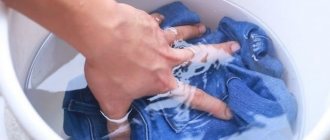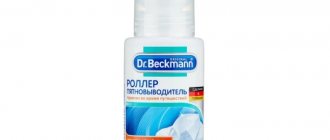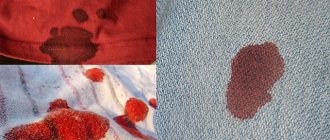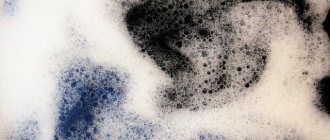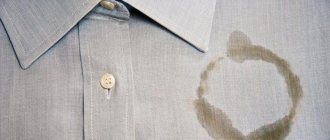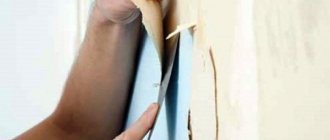How to remove blood stains from bed linen
Traces of blood are the most common and at the same time difficult to remove type of stain on bed linen. Under the influence of high temperatures, the substances contained in it quickly penetrate into the depths of the fabric fibers.
Therefore, you need to wash bed linen in cold water, using effective folk remedies and store-bought stain removers.
Blood, compared to other contaminants, is quickly absorbed into the fabric. Once it gets deep into the fibers, it dries quickly, after which it is almost impossible to wash it.
Therefore, it is better to remove blood from bedding as soon as it is detected. This type of stain must be washed following certain rules:
- Using hot and warm water aggravates the problem (the blood clots and dries faster). It needs to be washed in a cool liquid.
- Do not rub the fabric too much. This will cause blood traces to penetrate deeper into the fibers. It is recommended to blot wet spots with paper towels. If you cannot do without wiping off the blood, you need to act with careful movements from the edges to the center. This will help prevent the stain from spreading over a large area.
- The easiest way to remove blood from a sheet is with enzyme powder. These are special protein enzymes that eat away dirt.
- Dried blood begins to be washed off from the wrong side.
- Select a cleaning agent based on the type of fabric. For silk or satin bed linen, you will have to use gentle compounds. It is better to test the selected cleaner on an inconspicuous area before the main wash.
Watch the video on how to remove blood.
If it was not possible to wash the blood from the sheet the first time, the linen should not be dried or ironed. You won't be able to remove dried stains in one go. And repeated attempts do not guarantee a 100% successful result.
How to remove blood from a sheet in a washing machine
It is better to wash blood from bed linen manually. Machine washing, if not set correctly, will cause blood protein to coagulate. Then a yellow mark will certainly remain on the thing. Instructions on how to remove stains using a washing machine:
- Soak the contaminated area of the fabric in ice water or hold it under the tap. When the blood trail fades, proceed to the next step. Laundry soap shavings, powder or stain remover are suitable for soaking.
- For washing, use anti-stain powder. To enhance the effect, add salt, stain remover or ammonia to it.
- Select a washing mode with the lowest possible temperature (no higher than 30 degrees).
- It is better to disable the spin function. If the blood is not washed off the first time, it can be immediately sent for re-cleaning.
How to remove blood stains from bed linen.
Don't try to clean blood from a white sheet with chlorine bleach. The active components will not be removed, but will make it red. Optical and oxygen bleaches will work more effectively.
How to remove stains with home remedies
It's easy to remove fresh blood stains from sheets using available products. The most effective are laundry soap, saline solution, and hydrogen peroxide.
But the main cleanser for blood blots at home is cold. You can remove a fresh red mark with an ordinary ice cube. It is enough to rub the dirty area with it until the stain disappears completely.
If the cold is powerless, stronger means are used.
Laundry soap for fresh stains
Laundry soap removes any type of dirt no worse than store-bought stain removers. Application technique:
- rinse the contaminated area under running water;
- rub the stain with laundry soap and leave for half an hour;
- Wash your laundry as usual.
If the blood has had time to dry slightly, the soap is grated, and the resulting shavings are added to cold water already at the soaking stage.
Available in 3 forms: 65,70,72%. The higher the percentage, the more effectively the bar copes with dirt. However, laundry soap often washes away the dye from the fabric. Therefore, for colored bed linen it is better to use bars with a reduced fat content (65%).
Saline solution for dried stains
A regular salt solution will help remove old blood stains. Contaminants of this type can be easily removed in low concentration liquids. If you overdo it with the amount of salt, washing will give the opposite result - the trace of blood will become more firmly embedded in the fabric, and it will be difficult to wash it off.
Application technique:
- dissolve 1 tablespoon of salt in 1 liter of ice water;
- soak things in the resulting liquid and leave overnight;
- In the morning, wash your laundry with laundry soap or anti-stain powder.
Baking soda will enhance the effect of salt. Both components are mixed and poured onto the blood moistened with water. To completely remove old traces of blood, rub them with a toothbrush. However, this method is dangerous for the color and structure of the fabric. Strong friction plus the action of the crystals damage the fibers.
Hydrogen peroxide for light-colored laundry
Hydrogen peroxide, unlike other cleaning products, “eats away” the stain itself, rather than washing away its remnants.
It can be used to wash light-colored items. Colored bedding will still have discolored areas after washing in this manner.
Application technique:
- lay the soiled item on the ironing board (the fabric should be distributed in one layer, otherwise blood marks will be imprinted on the back side);
- place an unnecessary cloth under the stain to protect the board from dirt;
- Pour hydrogen peroxide onto the stain;
- wait until the foam reaction subsides;
- remove any remaining liquid with a clean cotton pad;
- repeat the treatment until the blood disappears completely.
When the item is clean, you need to immediately wash off the remaining peroxide with water and finally wash the laundry as usual.
It is forbidden to wash silk, chintz and any delicate materials with hydrogen peroxide. The substance corrodes the fibers, and a hole may appear where the blood used to be.
Starch for delicate fabrics
Cleaning blood from a silk or satin bed is a difficult task. Most of the funds in this case are prohibited due to the risk of damaging the product. The most gentle method involves using starch.
Application technique:
- moisten the problem area with cold water;
- Gently rub the starch into the fabric from the front and back sides;
- wait for the substance to dry;
- shake off remaining starch.
Finally, the product is washed by hand with baby soap or mild hair shampoo.
Using professional products
If you can’t remove blood stains with improvised means, store-bought stain removers will come to the rescue. They come in the form of liquids, gels, powders and sticks.
The most effective brands of stain removers against blood:
- Liquid Dr. Beckmann (150 rubles). The product is applied to the blood and left for 10 minutes. Residues are washed off with normal washing. Besides the blood of Dr. Beckmann copes with almost all types of dirt. The downside is the small volume of the bottle and high cost.
- Vanish stain remover (140 rubles). Available in separate series for white and colored linen. The concentrated liquid is poured onto the stain, left for 30 seconds, and then 1 capful is added to the powder and the item is finally washed in the machine. Vanish is suitable for soaking. The disadvantage is that it is not always possible to remove the stain the first time.
- Amway spray (600 rubles). The composition is sprayed onto the blood (distance 15 cm) and washed in the usual way. The spray has a pleasant citrus scent and is easy to use. The disadvantages of the product are the high cost and the need to re-process old blood traces.
Most stain removers are applied pointwise, forming a chemical reaction upon contact with dirt. Such compounds are dangerous for sensitive skin. Therefore, it is better to wash children's bedding with gentle products (Eared Nanny, Meine Liebe, Our Mother, Umka, etc.).
Meine Liebe Our mother Umka Eared nannies
You can remove blood from bed linen using folk remedies and store-bought stain removers. Fresh dirt that has not had time to dry can be easily removed with cold water. To combat old marks that have gone through more than one wash, you will have to use aggressive compounds that can ruin the color and structure of the fabric fibers.
Washing sheets with dried blood
How to remove blood from a sheet if the stain has already dried and become fairly ingrained into the fabric? Drastic methods will be required. An ingrained substance is much more likely to leave indelible stains after removal, similar to rust.
A prerequisite for successful washing when the blood on the sheet has already dried is soaking. Soaking should be done in cold foamy water with detergent, peroxide or any other product listed in the points above. Further removal differs from the actions for a fresh stain.
- Vinegar removes blood on the sheet. It is diluted 50 to 50 with water into a small container for washing, then a soiled piece of fabric is dipped into the resulting solution. This method is only suitable for a small spot. If the stained area is large, then place the already affected sheet on another cloth moistened with the solution.
- How to remove blood from a sheet with simple washing powder? The powder (about 20 grams) must be dissolved in water and placed in a small container. The liquid is poured onto the stain and rubbed in with a toothbrush or other hard brush. After a quarter of an hour, blot the wet spot with a soft and colorless piece of cloth until the external moisture disappears.
- After several unsuccessful attempts, the question “How to remove blood from a sheet?” seems already unsolvable. But removing the stain can take two, three or even four washes. When using a mild dirt remover and a gentle wash cycle with cold water, there is a 70% chance that the stain will come out after a couple of washes. It is important not to dry it with a hair dryer or dryer. The thermal effect will only cause the blood to penetrate into the tissue more strongly. Drying in the sun will not lead to such a consequence.
There are more than a dozen ways to remove blood from a sheet. They are available for home use and do not require trips to the dry cleaner or additional expenses. Home cleaning may take a little longer than professional cleaning, but the main thing is that the result will satisfy the owner of the bed linen.
How to wash blood from menstruation on a sheet: how to remove stains from bed linen
Washing blood from menstruation on a sheet is not as difficult as it seems in reality. The main thing is to know about the features of removing blood impurities and strictly follow the recommendations given below. Not a single woman is immune from such a nuisance, so it is better to know for sure how you can wash blood from bed linen without ruining the product.
Features of removing blood stains from menstruation from sheets
Blood is quickly absorbed into the tissue structure, and the substances contained in it become difficult to remove after drying. Therefore, you should start working on removing stains from sheets and other bedding immediately, without waiting for them to dry. There are a number of general rules that must be followed when trying to remove blood stains:
- you need to soak the sheet in cool or cold water;
- You can wipe the mark with an ice cube and blot it with a clean rag;
- the use of chemicals is possible only on fabrics that will not be harmed by them (you can conduct a preliminary test on an inconspicuous area);
- An unwashed product should not be dried or ironed, otherwise the blood stain will be difficult to completely remove.
How to remove a fresh blood stain from a sheet
Fresh blood stains can be removed with minimal effort. But even in this case, some difficulties may arise. First of all, it is recommended to try to remove biological traces from bed linen with products that are always at hand and available in every home.
We recommend reading: How to remove brilliant green from linoleum
How to remove blood stains from bed linen with baking soda
You can remove blood stains from a white sheet using baking soda, which is used in cooking. To do this you need:
- Wet the contaminated area with cold water.
- Sprinkle baking soda on the problem area.
- Grind a little.
- Leave for 20 - 30 minutes.
- Wash in warm water.
- Then carry out the usual washing cycle with the addition of washing powder.
If you are unable to wash your bed linen right away, you can add another component to the soda - whitening toothpaste. The procedure is as follows:
- Wet the stained area with cold water.
- Stir in a small container 1 tbsp. l. soda and the same amount of toothpaste (it is better to choose pure white toothpaste without colored inclusions).
- Apply the mixture to the blood trail.
- Leave to act for 20 minutes.
- Wash in warm water.
How to remove blood from a sheet with aspirin
Regular aspirin, which is taken for fever and headache, will help remove blood from bed linen.
- Crush 10 - 15 tablets of the medicine.
- Add a little water to make a paste.
- Apply to dirt.
- Wait no more than 30 minutes.
- Wash the product in the usual way.
How to remove blood from bed linen with hydrogen peroxide
Disinfectant can also remove blood stains from sheets. It is best to use peroxide only on light-colored items. The withdrawal method is as follows:
- Lay the sheet out on a flat surface.
- Pour a little peroxide onto the problem area.
- A reaction of the drug with the blood must occur - foam forms on the tissue. After it fades, you can blot the treated area with a cotton pad and repeat the procedure.
As soon as there is practically no trace left of the blood, the sheet can be washed with powder.
It is better to use hydrogen peroxide only on light-colored fabrics, as this product can seriously “eat away” the color. If you plan to use peroxide on colored bed linen, it is best to conduct a preliminary test on an inconspicuous area of the fabric.
How to remove blood stains from sheets with starch
Starch is a natural stain remover that copes well with biological stains. It will also help remove blood:
- Pour starch into a small saucer.
- Add some water.
- Apply the resulting slurry to the dirt.
- Leave for about an hour.
- Wash bed linen.
Attention! Starch can also be applied dry. Only the cloth must first be moistened with cool water.
For dark bedding sets, you can use a slightly different option for using starch:
- Moisten the contaminated area.
- Sprinkle starch on it.
- Wait 60 minutes.
- Drop 2 - 3 drops of brilliant green into a bowl of cold water.
- Soak the laundry.
- Wash as usual.
This method allows not only to remove the bulk of the contamination, but also to “tint” traces of the presence of blood on the fabric.
If you don’t have starch on hand, you can use fresh potato tubers. To do this you need:
- Peel the potatoes.
- Grate it on the finest grater.
- Apply the paste to the stained area.
- Leave for 2 - 3 hours.
- Discard dried mashed potatoes.
- Wash the product with powder.
We recommend reading: Potatoes: beneficial properties and contraindications
How to remove an old blood stain from a sheet
Old traces of blood are removed worse: after the protein is absorbed into the fabric of the bed linen, the stain becomes difficult to remove, so the measures to combat it will be different.
First of all, it is worth remembering a few facts:
- Old stains are difficult to remove the first time: most likely, repeated treatment will be required.
- It is best to start removing stains from the underside of the bed linen.
- To prevent blood from spreading over clean areas of the bed, you must be extremely careful, rubbing the stain from the edges to the center and not pouring a large amount of liquid.
How to remove old blood from sheets with salt
To remove blood from bed linen, you can use regular table salt. It is best to use coarse salt. If you have sea salt on hand without additives, it can also be used as a stain remover.
- Wet the sheet.
- Sprinkle a small amount of salt.
- Rub onto fabric using a regular toothbrush.
- Leave to act for 20 minutes.
- Wash the product.
Attention! Bedding can be soaked in a strong saline solution overnight. To do this, add 1 kg of salt to 10 liters of water. Then you just need to wash the clothes.
You can improve efficiency and wash your sheets faster by adding a small amount of soda to the main ingredient. Procedure:
- Wet the cloth.
- Sprinkle some fine salt.
- Grind.
- Sprinkle baking soda on top.
- Rub again with a brush.
- Leave for 20 - 40 minutes.
- Wash as usual.
How to remove blood stains from sheets with glycerin
Glycerin will also help remove old blood stains on your laundry.
- Heat a small amount of glycerin in a water bath.
- Apply the product to the laundry.
- Leave for at least 3 hours.
- Wash first in cool water, then in warm water.
Important! Glycerin can be used not only on white items, but also on colored fabrics. Therefore, such a product is the first assistant in the fight against pollution of this kind.
How to remove blood stains from a sheet with ammonia
Ammonia is a good remedy that can deal with old blood stains. To remove contamination you need:
- Apply ammonia to the problem area.
- Rub with a sponge or brush.
- Wash with powder after 20 minutes.
If this method fails to cope with the contamination the first time, you can repeat the procedure by adding a little glycerin to the ammonia.
How to remove blood stains from bed linen using household chemicals
Household chemicals are considered very effective in combating blood stains on bed linen. It can be selected for any type of fabric, even used on colored items. The only disadvantage of such funds is that many of them are expensive and are not always available.
- Vanish bleaches. Oxygen bleaches of this brand cope well with many stains, including blood on bed linen. To remove it, you must strictly follow the instructions. It is usually recommended to directly apply the product to the stained area, and then add bleach to the washing machine.
- Amway oxygen bleaches. This brand's product line includes a variety of stain-fighting products. Some of them will help remove blood. Application is similar to other bleaches.
- Laundry soap or Antipyatin. This household chemical is one of the most common and quite effective. First you need to moisten the sheet with cold water, then rub the problem area with soap, wait from an hour to three, and wash the product.
- White. Despite the fact that many housewives do not recommend washing off blood with bleach and other chlorine-containing preparations, sometimes they are the only way out in this situation. If the fabric allows, you can apply a small amount of white to the stained area, wait a few minutes, rinse, and soak in water with white added for 5 to 7 hours.
- Dishwashing liquid. Since blood is a biological material, traces of it can be washed off using regular dishwashing liquid. To do this, apply the product to the stained area, rub, and leave for 30 - 40 minutes. Wash afterwards. If after the first attempt it was not possible to cope with the contamination, the procedure can be repeated.
Conclusion
It will be easier to remove period blood from sheets and other bedding if you start working immediately. If the blood has time to dry, then to fight it you will have to make a lot of effort and spend a lot of time.
Did you find this article useful? How to wash blood from bed linen Link to main publication
Removing a fresh blood stain from a sheet
How to remove blood from a sheet
You should try to start cleaning as early as possible, before the substance is absorbed deeply into the structure of the fabric fibers and becomes difficult to remove. The first step to remove blood from a sheet is to wet the fabric with cold water. Important! It should be precisely at a low temperature, since heat only accelerates the absorption of liquid.
Next, proceed to one of the following actions:
- Hydrogen peroxide will help remove blood stains on the sheets. It has a good lightening effect and instantly reacts with the blood. It is enough to immerse the stained area in a peroxide bath for 20-25 minutes. The result will be especially positive if, after the end of the period, you rub the sheet a little, finally washing out any remaining blood from it. After removing the stain, the fabric should be rinsed and dried thoroughly.
- Window cleaner is also good for removing blood stains from sheets. It works within 15 minutes and is conveniently applied using a spray. Use your hands or a brush to wash off the blood on the sheet, applying pressure to the back of the fabric.
- If the fabric is white and not dyed, you can use ammonia. How to remove blood from a sheet using this seemingly medicinal drug? The liquid is poured into the spray bottle mixed with a glass of cool, clean water. Just shake the mixture well and it is ready for use.
- Bleach will help deal with particularly stubborn stains, but only on white surfaces. It should be used according to the instructions, but always without the use of warm water and drying. Usually one cap of bleach is enough for a stain the size of a quail egg. The fabric should be soaked for half an hour, then it should be rinsed with cold running water.
How to remove blood from sheets at home
Blood on clothes and sheets is not a rare occurrence. It is especially noticeable on light-colored items and is quite difficult to remove. Below we describe in detail various options for how to remove blood from a sheet with all possible nuances: fresh or old blood stains, dried blood, washing by hand or using a machine.
How to remove fresh blood stains
If you have a blood stain on your clothing, immediately wash it with cold water.
Important! Never try to remove blood with hot water.
This approach will make the situation worse. Below are the most popular methods for removing stains at home in full detail.
Hydrogen peroxide
- After soaking with cold water, pour hydrogen peroxide or chlorhexidine into the dirt. Be careful not to allow any liquid to come into contact with the clean surface, as this may cause the fabric to fade.
- Wait 25-30 minutes.
- Blot the area to be treated with a paper towel or clean, white rag.
- The stain should become lighter or disappear. For complete removal, wash the entire product in the washing machine or by hand as you usually do.
IMPORTANT: Hydrogen peroxide can be replaced with table vinegar or sparkling water.
How to wash blood from a sheet is a pressing question for many girls during menstruation. Fresh blood stains can be easily removed with ammonia.
Ammonia is too caustic, so it is not recommended to use it in its pure form - it must be diluted.
One convenient option is glass cleaner. It contains ammonia, as well as fragrances that help quickly remove old dirt. To do this, wet the cloth with cold water, then spray the spray on the problem area. Leave for 15 minutes. When it becomes paler, wash it with laundry soap.
If the fresh blood stain is too large, you can use diluted ammonia. To do this, dilute 30 ml of liquid in 220 ml of distilled water. Use a spray bottle to apply. This way the product will be distributed evenly. After 40-50 minutes, blot the area with a clean rag and wash the clothes in cold water.
IMPORTANT: Ammonia will corrode colored fabric, destroying the paint.
A paste is prepared from baking soda and water, which is carefully applied with a toothbrush to a fresh stain.
Then iron the area with a white cotton cloth and leave it to dry in the open air.
Baby powder and corn starch are used in a similar way.
Salt
Salt, combined with the harsh environment of liquid soap or dishwashing detergent, does an excellent job of removing fresh blood on clothes. Leave the mixture on for 30 minutes and then simply rinse with cold water.
Natural stain remover
Supporters of environmentally friendly products will really like this method. A simple, gentle stain remover is made from:
- 30 g baking soda;
- 30 g chlorhexidine;
- 15 g cold water.
The mixture is shaken, then applied in an even layer. Exposure to the mixture is allowed for no more than 10 minutes, then it is washed off. If the stain does not disappear, repeat the procedure 2-3 more times.
Instead of soda, you can use citric acid. This solution removes stains from cotton.
Bleach, commercial stain remover
Purchased products for removing even fresh stains must be used correctly. First, pour a little stain remover onto the stained area and leave for 30 minutes. Then scrub and rinse with cold water. Refill and rinse the entire item thoroughly.
IMPORTANT: Laundry should dry naturally, without using batteries or strong hot air.
Often blood is discovered late, for example, a sheet is stained at night during menstruation. By morning it dries and eats into the fabric structure.
If this happens, you should soak the item in cold water for several hours. The modern detergent market offers a large selection of softening options.
Folk tips for removing blood recommend adding 3-4 crushed aspirin tablets or 1 teaspoon of citric acid to water.
After the fibers and stain have softened, a stain remover is applied. The above methods are good for blood stains that are not too dry.
For completely dried contaminants, the exposure time is 1.5-2 times longer. Also remember that it is necessary to repeat the cleaning procedure 2-3 times. Old stains are removed by rubbing with a brush. For this purpose, use an old toothbrush.
How to remove blood from a sheet
How to remove blood from a sheet
Blood is a difficult substance to remove that you have to deal with at home. Blood stains may appear on fabric in those who are susceptible to pressure changes and suffer from nosebleeds. The option of keeping a patient with bleeding scratches at home cannot be ruled out. Regardless of the cause, it will be very difficult to remove blood stains from a sheet.
More often, soiled linen is replaced, but in some cases, damaged bedding is made of expensive satin or natural cotton. Then, in order to save money, they move on to cleaning. How to remove blood from a sheet, removing the slightest trace of contamination?
Effective recipes and methods for removing blood from clothes at home
Blood stains are among the most difficult to remove. Household chemicals and homemade recipes will help you cope with the task.
In addition, one should take into account the peculiarities of processing such marks and the presence of a number of prohibitions.
For more information on how to remove blood (fresh, dried, old) from clothes at home, and what water to treat the fabric in, read the article.
Fresh spots
The effectiveness of washing depends very much on how much time has passed since the stain appeared and on the type of fabric. The faster you start removing traces of blood, the better the result will be.
A simple stain removal option:
- Hold the affected area under cold running water.
- Fill a basin with cold water.
- Dilute the detergent.
- Rub the damaged area of the material with laundry soap.
- Soak the item for 30-40 minutes.
- Extend.
- Rinse.
The complexity of blood stains lies in the protein and hemoglobin they contain. The protein has the property of coagulating when exposed to temperature, and iron from hemoglobin in the blood gives the stain a reddish tint, which is difficult to remove.
Old, dried out
Traces of blood that have already dried will be much more difficult to remove. If the recipe you are using does not help, you can use another one.
It is advisable to start processing by soaking the entire item in cold water . This technique will prepare the fabric for further processing.
For relatively fresh stains, it is enough to keep the clothes in water for an hour, for old traces of blood (if the type of fabric allows) - longer, 2-3 hours.
If, after soaping with Antipyatin or laundry soap, the stain does not go away completely, proceed to removing the marks using one of the recipes.
Dishwashing gel
Shampoo or dish soap can be used to remove stains if nothing else is available and the stain is not yet old.
To do this , moisten the material, apply the selected preparation and rub gently . After 10 minutes, wash and rinse the item.
Another way is to apply undiluted dishwashing gel directly to the stained area of the material. Apply liberally, not in a thin layer.
After this, cling film is placed on top and left in this form for a couple of hours or even more, up to five. After this, the product is washed.
Soda
Removing stains with soda is carried out according to the following method:
- Pour 1 glass of cold water into a container.
- Pour 10-15 grams of soda into it.
- Stir.
- Pour the solution onto the mark.
- Leave for 30 minutes.
- Rub the dirty area.
- Wash the item using detergent.
The recipe is designed for thick fabric.
Ammonia
Ammonia allows you to remove blood from clothes, sheets and other soiled items made from linen or cotton.
Procedure:
- pour 3 liters of water into a basin;
- pour in 60 ml. ammonia;
- soak the thing;
- keep in the solution for a couple of hours.
Potato starch
For thick cotton and linen fabrics, you can use almost any of the recipes, but for delicate items you need to proceed differently:
- Pour ½ cup of starch into a container.
- Add a little water to form a paste.
- Apply the mixture to the fabric.
- Set the item aside for the time necessary for the paste to dry completely.
- Clean any remaining slurry from the material with a dry cloth or towel.
- Wash the product.
Vinegar
Table vinegar, thanks to the acid it contains, can be a good stain remover. A local stain can be treated with undiluted liquid and left for half an hour.
If there are several stains in different places, then it would be better to prepare a solution of two parts water and one part vinegar . The item is completely dipped into it and left for 10-15 minutes, after which it is washed.
For vinegar to be 100% effective and completely remove stains, it should be used within the first 24 hours after the mark is formed. After this period, acetic acid will be less effective.
Glycerol
Glycerin is often used to remove stains. For the best effect of the manipulation, the bottle with glycerin should be warmed up a little so that it becomes warm.
Using a cotton swab, treat the blood stain while the glycerin is still warm. After removing the stains, the item is washed and rinsed.
Lemon and salt
Lemon juice is a natural product that helps in removing a variety of stains. Citric acid, like acetic acid, can also cope with blood stains.
For cleaning, prepare the following mixture:
- in a container mix 2 tbsp. l. lemon juice and 1 tbsp. l. salt;
- Using an old toothbrush, treat the fabric;
- Rinse the material with cold water.
The disadvantage of this method is its relatively low effectiveness against large or old stains. And the impossibility of using on colored fabrics.
Top 3 household chemicals
In addition to home recipes, household chemicals can be used. These include modern stain removers in various forms (from liquids to powders and pencils).
The principle of operation of the stain remover is a chemical reaction in which foam can even form . While this effect remains, you should not wash off the cleanser.
Special stain remover Dr. Beckmann
This well-known product is designed to remove not only blood stains, but also other protein-based contaminants.
The stain remover is available in liquid form and has an active formula that is effective against a wide range of stains. A 50 ml bottle costs from 200 rubles.
Using the stain remover is very simple:
- Apply the product to the blood.
- Leave for 5 to 10 minutes.
- Wash as usual.
Flaws:
- small volume;
- high price;
- inconvenient to dose;
- For older stains, re-treatment may be necessary.
Spray Amway SA8
This spray is intended for pre-treatment of stains before washing. Bottle volume - 0.4 l. Price – from 600 rubles.
The product has a pleasant citrus aroma and is easy to apply to the desired location. The solvents included in the composition are highly active against various stains, including blood.
Application:
- Spray onto the stain from a distance of 0.15 m.
- Wash as usual.
Flaws:
- not always effective for old stains;
- high price.
Vanish Gold Oxi Action
Liquid stain remover is available in varying volumes. Minimum – 0.1 ml. Price -160 rubles for 0.45 l.
The gel is produced separately for white items, and separately for colored items. Can be used for soaking, removing local stains and as a means of enhancing the effect of regular washing powder.
Stain Treatment:
- Apply the product to the stained area undiluted.
- Rub a little.
- Measure a portion (1 measuring cap) and add to the powder when washing in the machine.
Features of removing stains from various fabrics
Not all fabrics respond equally to blood stain removal recipes :
- thin and delicate materials should not be exposed to acids and alcohols;
- dense materials (for example, jeans) are difficult to clean from stubborn stains due to the way the fibers are interwoven;
- white dense natural materials make it possible to actively remove stains by alternating recipes.
Cotton and linen
Most cotton and linen textiles respond well to stain removal. If the material is dense and white, then you can not be afraid to use either vinegar, ammonia, or professional stain removers.
Jeans
You can try to clean denim material with dishwashing detergent diluted in water . For convenience, it is better to use a toothbrush to rub the stain.
By doing this, it is more convenient to get to the fibers of the material. After treatment, the jeans will need to be rinsed.
If the method does not help much, you can use a recipe based on starch or soda . Do not rub the stain vigorously - the fabric may become discolored. The same problem can occur when exposed to vinegar or alcohol, especially over a long period of time.
Restrictions on the use of peroxide and vinegar do not apply to white jeans - they can be used.
Read more about fighting blood on denim here.
Delicate materials
Delicate materials, even white ones, require careful handling . If you can’t wash off the blood right away, it will be difficult to remove the stain, since most recipes are not suitable. It is possible to use only non-aggressive drugs, for example, starch.
It is better to test store-bought stain removers on an inconspicuous small area before using them on a stain.
Prohibitions and restrictions
There are many ways to remove stains, allowing you to choose the most suitable one. It must be taken into account that deviations from time-tested methods may not only not help, but also have the opposite effect.
The prohibitions include the following:
- Do not use hot water to remove stains. This is due to a protein that is part of the blood, which has the property of coagulating under the influence of high temperatures. In this case, the blood is retained and not removed.
- Do not rub a fresh stain so as not to smear it even more. Better to just get wet.
- If you don’t have time to soak and wash, you can apply the stain remover to the stained area, and after 10-15 minutes send the item to be washed in the machine. In this case, it is necessary to ensure that the water temperature is below +30ºС.
- If the fabric is delicate, then vinegar and ammonia should not be used without first testing on an inconspicuous area.
- Solvents such as acetone or white spirit should not be used.
If you are not sure about the safety of a particular stain remover, it is advisable to avoid using it so as not to completely ruin the item.
Recommendations
Simple methods will help you remove blood stains from clothes. In addition to using recipes, you should follow these tips:
- When removing blood stains, you should wear rubber gloves to protect your hands from exposure to chemicals.
- If time was lost, the stain dried out, and then it was also processed incorrectly, the blood protein coagulates.
It will be extremely difficult to remove such contamination. As a last resort, if all resources have been exhausted, use intensive machine washing. However, the result is not guaranteed. - Even for white fabrics, you should not be too zealous with the use of stain removers, since they not only have bleaching properties, but also thin the material itself.
- Preparations with chlorine worsen the condition of the tissue and have an insidious quality - they leave the outline of the stain visible after removing it.
- Industrial stain removers have different instructions, so be sure to read them.
Stain removal options can be used one at a time, but not simultaneously, mixing a variety of ingredients in a row.
